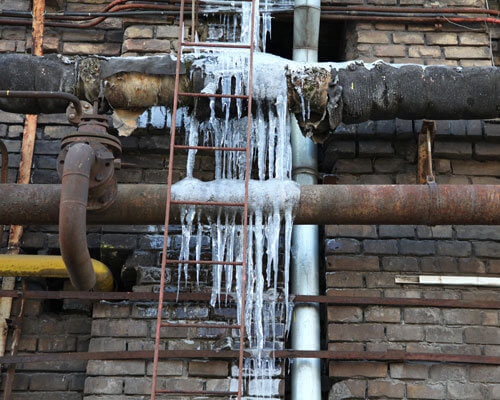What're your thoughts on 6 Ways to Prevent Frozen Pipes?

Cold weather can wreak havoc on your pipes, especially by freezing pipelines. Right here's how to prevent it from taking place and what to do if it does.
Introduction
As temperatures decrease, the threat of frozen pipelines increases, potentially bring about expensive fixings and water damages. Understanding just how to avoid frozen pipes is vital for house owners in chilly environments.
Prevention Tips
Shielding at risk pipelines
Wrap pipes in insulation sleeves or make use of warmth tape to protect them from freezing temperatures. Focus on pipelines in unheated or exterior locations of the home.
Heating techniques
Maintain indoor areas properly heated, especially locations with pipes. Open closet doors to enable warm air to flow around pipelines under sinks.
Exactly how to determine frozen pipelines
Try to find decreased water circulation from faucets, uncommon odors or sounds from pipes, and noticeable frost on subjected pipelines.
Long-Term Solutions
Structural adjustments
Think about rerouting pipelines away from outside walls or unheated locations. Include extra insulation to attic rooms, cellars, and crawl spaces.
Upgrading insulation
Purchase high-quality insulation for pipelines, attics, and walls. Proper insulation helps preserve constant temperatures and reduces the danger of icy pipes.
Protecting Outdoor Plumbing
Yard hose pipes and outdoor taps
Disconnect and drain garden pipes prior to winter months. Mount frost-proof faucets or cover outdoor taps with protected caps.
Comprehending Frozen Pipelines
What causes pipelines to ice up?
Pipelines freeze when exposed to temperatures listed below 32 ° F (0 ° C) for prolonged durations. As water inside the pipes ices up, it expands, putting pressure on the pipeline wall surfaces and potentially causing them to burst.
Threats and damages
Frozen pipes can lead to water supply interruptions, property damage, and pricey repair work. Ruptured pipelines can flood homes and trigger considerable structural damages.
Indicators of Frozen Water Lines
Identifying icy pipes early can avoid them from rupturing.
What to Do If Your Pipes Freeze
Immediate activities to take
If you presume icy pipes, maintain faucets open to soothe pressure as the ice thaws. Use a hairdryer or towels soaked in hot water to thaw pipes gradually.
Final thought
Protecting against icy pipelines calls for aggressive procedures and quick responses. By understanding the reasons, indicators, and safety nets, house owners can secure their plumbing during cold weather.
5 Ways to Prevent Frozen Pipes
Drain Outdoor Faucets and Disconnect Hoses
First, close the shut-off valve that controls the flow of water in the pipe to your outdoor faucet. Then, head outside to disconnect and drain your hose and open the outdoor faucet to allow the water to completely drain out of the line. Turn off the faucet when done. Finally, head back to the shut-off valve and drain the remaining water inside the pipe into a bucket or container. Additionally, if you have a home irrigation system, you should consider hiring an expert to clear the system of water each year.
Insulate Pipes
One of the best and most cost-effective methods for preventing frozen water pipes is to wrap your pipes with insulation. This is especially important for areas in your home that aren’t exposed to heat, such as an attic. We suggest using foam sleeves, which can typically be found at your local hardware store.
Keep Heat Running at 65
Your pipes are located inside your walls, and the temperature there is much colder than the rest of the house. To prevent your pipes from freezing, The Insurance Information Institute suggests that you keep your home heated to at least 65 degrees, even when traveling. You may want to invest in smart devices that can keep an eye on the temperature in your home while you’re away.
Leave Water Dripping
Moving water — even a small trickle — can prevent ice from forming inside your pipes. When freezing temps are imminent, start a drip of water from all faucets that serve exposed pipes. Leaving a few faucets running will also help relieve pressure inside the pipes and help prevent a rupture if the water inside freezes.
Open Cupboard Doors
Warm your kitchen and bathroom pipes by opening cupboards and vanities. You should also leave your interior doors ajar to help warm air circulate evenly throughout your home.

I was shown that editorial on How To Avoid Freezing Pipes from someone on a different web page. Feel free to take a moment to share this page if you liked it. We cherish reading our article about Prevent Frozen Pipes .
Prices & Booking